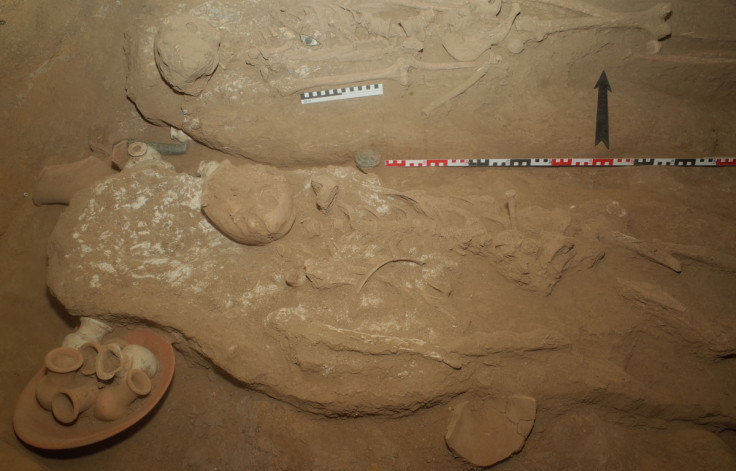Ancient Egypt: 3,400-year-old tomb of gold worker discovered on Nile River island
The remains of a dozen individuals, including a foetus, were found inside the tomb.

Archaeologists working on Sai Island, in northern Sudan, have discovered a large tomb that is 3,400 years old. Inside, at least 12 individuals who may have been mummified were buried.
The discovery may tell archaeologists a lot about the cultural identity of the inhabitants of the island, at a time when it was dominated by Egyptians.
Sai Island is one of the largest in the Nile Valley and it formed part of the ancient land of Nubia under Egyptian control.
In 1970s, a French archaeological mission discovered a cemetery associated with the island's Ancient Egyptian settlement. The archaeologists excavated 24 tombs, but expected more to be found in the future.
In 2015, a mission led by Julia Budka, professor for Egyptian archaeology and art history at the Ludwig-Maximilians-University of Munich, discovered the large tomb known as Tomb 26, which she and her colleagues spent the next two years excavating.
The archaeologists now know that this was the tomb of a man named Khnummose who was buried next to a woman, possibly his wife. It is believed that he might have worked in the gold industry linked to the gold mine on the island.
In separate chamber inside the tomb, the archaeologists discovered the remains of nine other individuals, buried with an infant and a foetus.
"The tomb was continuously reused and plundered a number of times but it wasn't until this year that we were able to identify the earliest, original burial, that of Khnummose," Budka told IBTimes UK.
"In the other chamber, at least three of the individuals appear to be contemporary to Khnummose. We don't know their names but our hypothesis is that they are family members. If we are able to extract ancient DNA, conduct strontium isotope analyses and study scientific markers on the skeleton, then maybe we can find out whether they were related."
However, this work is made all the more difficult because the tomb was flooded many times over the years, so the bones recovered by the archaeologists are very fragile. They need to be manipulated with great care, as there is a risk of breaking them.
Similarly, although there are indications that these individuals were buried in wooden coffins, only decayed chunks of wood were recovered.
Egyptian identity
The burials date back to a time when the Ancient Egyptians dominated the island and so far what the archaeologist find in the tomb fits well with previous discoveries made in the ancient settlement on the island. The site is thought to have been flourishing in the second half of the 18<sup>th dynasty of Egypt (1550 BCE to 1292 BCE) and this is seen both in the ancient city and in the tomb.
But to go beyond this broad picture, case studies like the story of Khnummose and his family are valuable. They can tell a lot about culture and identity on Sai Island at the time of the Egyptians.
"Khnummose may be a member of the second generation of Egyptians living Nubia, the offspring of one of the first Egyptians who arrived on the island. Or he may be an indigenous Nubian who became acculturated. We will need to do DNA and strontium isotope analysis to clarify this. What is clear however is that whoever he was, he saw himself as Egyptian and defined his cultural identity as Egyptian, as many features of his burial suggest," Budka said.
Indeed inside the tomb, the archaeologists unearthed a number of artefacts linked with the Egyptian culture. These include ceramic vessels, a gold ring, the remains of gold funerary masks worn by the deceased, but also a shabti - a typical Egyptian funerary figure meant to represent the deceased in the afterlife. The archaeologists also recovered scarabs in Khnummose's funerary chamber.
"The scarab is a common amulet in Ancient Egypt, and it could be used as a paper seal but in this case, the text inscribed on it suggests it is really related to the deceased's beliefs in the afterlife. It is there to increase Khnummose's chances of having a proper situation in the afterlife," Budka added.
Due to the bad state of conservation of the remains, it is unclear if the deceased had been mummified, but more analyses in coming months may help solve this mystery.
© Copyright IBTimes 2025. All rights reserved.






















